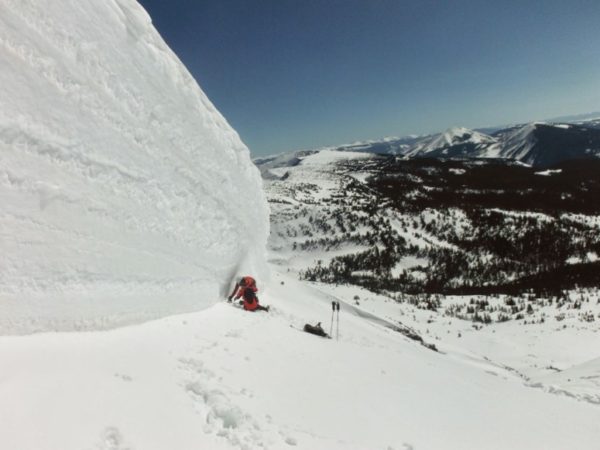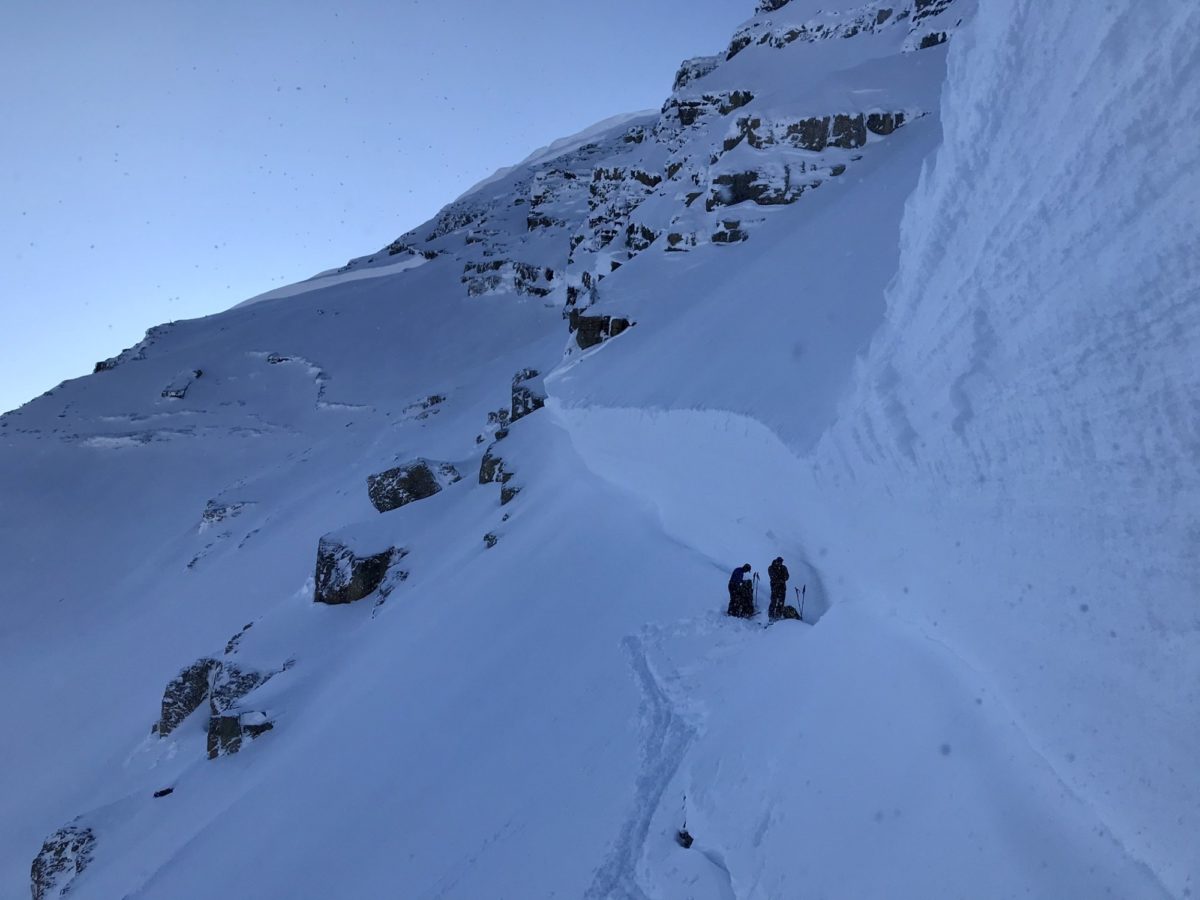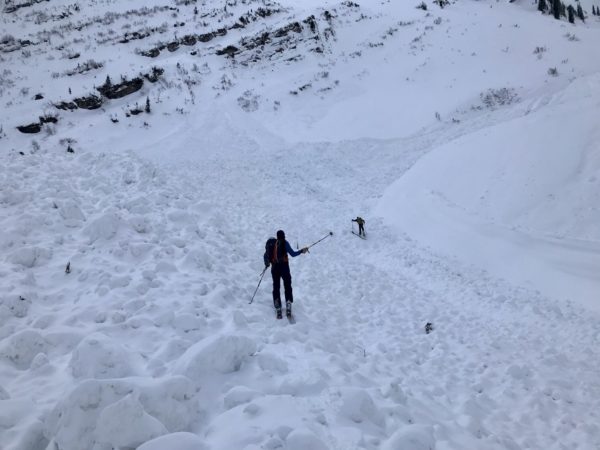Release of a thick cohesive layer of hard snow (a slab), when the bond breaks between the slab and an underlying persistent weak layer, deep in the snowpack or near the ground.
The most common persistent weak layers involving Deep Persistent Slabs are depth hoar or facets surrounding a deeply buried crust. Deep Persistent Slabs are destructive events that are especially difficult to manage and forecast for. They commonly develop when Persistent Slabs thicken over time and can persist for months. Deep Persistent Slabs are characterized by hard-to-trigger (low likelihood) but deadly (high consequence) events due to the enormous mass of snow involved. They are most commonly triggered from areas where the snowpack is relatively shallow, such as rock outcrops or margins of the slab in wind affected terrain. They typically fail naturally from significant loading events, abrupt weather changes, or cornice falls. Direct feedback from the problem is rare. Thus, tracks on a slope are not an indicator of stability. Deep Persistent Slabs may be triggered remotely—from flatter terrain below, above, and to the sides of steep slopes – even well down in the avalanche path. For these reasons, Deep Persistent Slabs require a very wide margin for error. Traveling where the snowpack is consistently deep and uniform will help reduce your risk. However, the most reliable way to manage Deep Persistent Slabs is to avoid avalanche terrain where the problem exists, which may be aspect or elevation dependent.

Deep Persistent Slabs fail on deeply buried weak layers. This makes the problem very challenging to assess in the field. Credit: Crested Butte Avalanche Center


